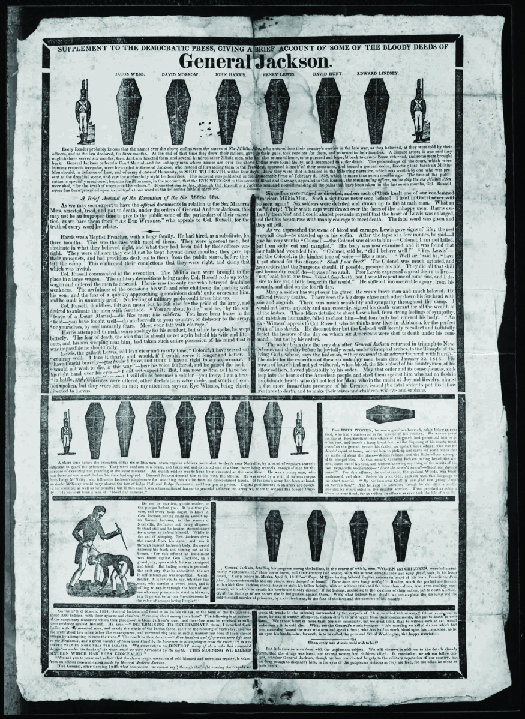| << Chapter < Page | Chapter >> Page > |
Want to know how much money federal candidates and PACs are raising? Visit the Campaign Finance Disclosure Portal at the Federal Election Commission website.
General campaigns also try to get voters to the polls in closely contested states. In 2004, realizing that it would be difficult to convince Ohio Democrats to vote Republican, George W. Bush’s campaign focused on getting the state’s Republican voters to the polls. The volunteers walked through precincts and knocked on Republican doors to raise interest in Bush and the election. Volunteers also called Republican and former Republican households to remind them when and where to vote.
Campaigns have always been expensive. Also, they have sometimes been negative and nasty. The 1828 “ Coffin Handbill ” that John Quincy Adams ran, for instance, listed the names and circumstances of the executions his opponent Andrew Jackson had ordered ( [link] ). This was in addition to gossip and verbal attacks against Jackson’s wife, who had accidentally committed bigamy when she married him without a proper divorce. Campaigns and candidates have not become more amicable in the years since then.

Once television became a fixture in homes, campaign advertising moved to the airwaves. Television allowed candidates to connect with the voters through video, allowing them to appeal directly to and connect emotionally with voters. While Adlai Stevenson and Dwight D. Eisenhower were the first to use television in their 1952 and 1956 campaigns, the ads were more like jingles with images. Stevenson’s “Let’s Not Forget the Farmer” ad had a catchy tune, but its animated images were not serious and contributed little to the message. The “Eisenhower Answers America” spots allowed Eisenhower to answer policy questions, but his answers were glib rather than helpful.
John Kennedy’s campaign was the first to use images to show voters that the candidate was the choice for everyone. His ad, “Kennedy,” combined the jingle “Kennedy for me” and photographs of a diverse population dealing with life in the United States.
The Museum of the Moving Image has collected presidential campaign ads from 1952 through today, including the “Kennedy for Me” spot mentioned above. Take a look and see how candidates have created ads to get the voters’ attention and votes over time.
Over time, however, ads became more negative and manipulative. In reaction, the Bipartisan Campaign Reform Act of 2002, or McCain–Feingold, included a requirement that candidates stand by their ad and include a recorded statement within the ad stating that they approved the message. Although ads, especially those run by super PACs, continue to be negative, candidates can no longer dodge responsibility for them.

Notification Switch
Would you like to follow the 'American government' conversation and receive update notifications?